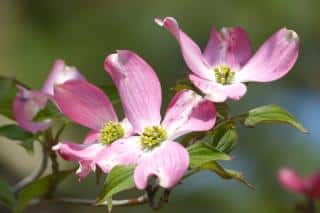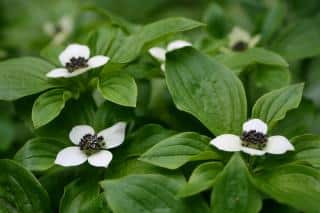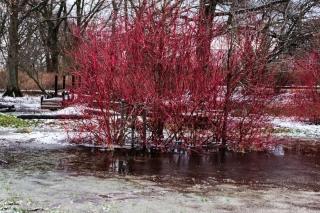

Dogwood (or Cornus) is a beautiful shrub that shares lovely flowers and beautiful leafage, especially in fall.
Key facts to remember
Name – Cornus
Family – Cornaceae
Type – Shrub
Height – 16 to 40 feet (5 to 12 meters)
Exposure – Sun, part sun
Soil – ordinary, humus-rich
Foliage – deciduous (evergreen for some species)
Flowering – April to June
The dogwood family has a number of shrubs and even a few small trees, but none of them grow any taller than a few dozen feet. The tallest dogwood species, such as the Cornus florida and the Cornus kousa can reach 20 to 25 feet though (6-7 meters). Smaller species, on the other hand, won’t ever get any taller than 6 feet (2 m), like Cornus alba.
Dogwood, or cornus, is preferably planted in Autumn to enable roots to settle in before the Winter colds strike. This will ensure a nice vegetation in Spring. If purchased in a pot or in a container, you can also plant in spring taking great care to water regularly at the beginning and in case of heat waves. Whatever the species, your dogwood will love locations with a rather high exposure to sunlight.

Dogwood naturally takes on a very elegant bearing as it grows older. You should really only prune your tree if you need to reduce it in size.
Note that it helps to cut dead wood off every now and then.
Dogwood is a magnificent tree that presents spectacular blooming in Spring and at the very beginning of Summer.
It’s easy to care for, even though certain parasites can still turn invasive on it, like scale. The entire Cornus genus comprises 30 to 50 different tree and shrub species, some of which have long-lasting evergreen leaves and others deciduous leaves.

Note the special Cornus canadensis, shown here in the picture, which makes for an excellent ground cover shrub that blooms in Summer.

Mulch locks moisture in the ground where the dogwood needs it. It’ll help the young tree cope with water needs on hot Summer days, when it really needs it! It’s especially useful during the first three year.